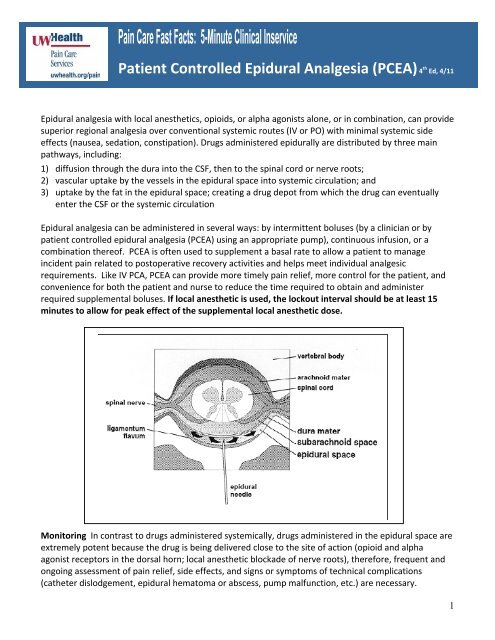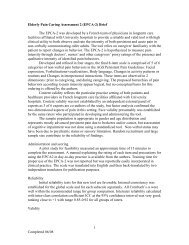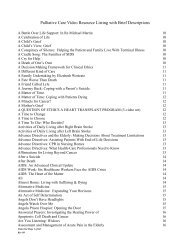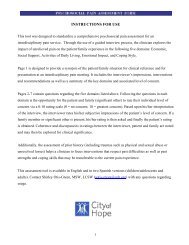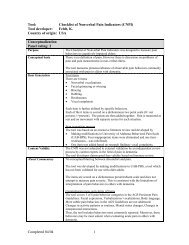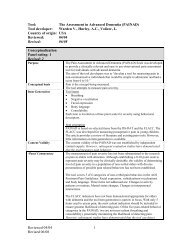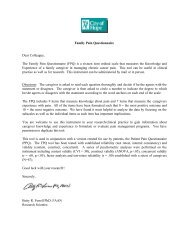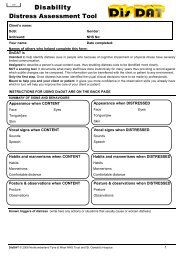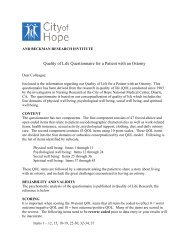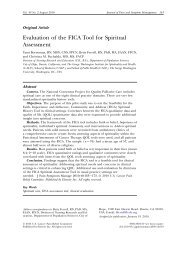Patient Controlled Epidural Analgesia (PCEA) - Pain Resource Center
Patient Controlled Epidural Analgesia (PCEA) - Pain Resource Center
Patient Controlled Epidural Analgesia (PCEA) - Pain Resource Center
- No tags were found...
You also want an ePaper? Increase the reach of your titles
YUMPU automatically turns print PDFs into web optimized ePapers that Google loves.
<strong>Pain</strong> Fast Fact: <strong>Patient</strong> <strong>Controlled</strong> <strong>Epidural</strong> <strong>Analgesia</strong> (<strong>PCEA</strong>) continuedFollow the <strong>Epidural</strong> and Intrathecal (Neuraxial) <strong>Analgesia</strong> policyfor assessment and documentation requirementsEvery hour for the first 24 hours, then every 4 hours, assess and document the following:• Respiratory rate and sedation level, preferably by the same nurse during each shiftEvery 4 hours while the epidural is in place• <strong>Patient</strong>’s pain rating using patient‐specific pain scale (e.g. 0‐10), both at rest and with activity• Side effects such as pruritus, nausea, urinary retention, orthostatic hypotension, motor blockEvery 8 hours while the epidural is in place• Catheter insertion site for signs of infection or epidural abscess, e.g., back pain, tenderness,erythema, swelling, drainage, fever, malaise, neck stiffness, or motor block• Any changes in sensory/motor function that may indicate an epidural hematoma includingunexplained back pain, leg pain, bowel or bladder dysfunction, motor blockSelected References:• Mann C et al. Postoperative patient‐controlled analgesia in the elderly: risks and benefits of epidural versusintravenous administration. Drugs & Aging 2003;20(5):337‐45.• Antok E et al. <strong>Patient</strong>‐controlled epidural analgesia versus continuous epidural infusion with ropivacaine forpostoperative analgesia in children. Anesthesia & <strong>Analgesia</strong> 2003;97(6):1608‐11.• Pasero C, Eskterowicz N, Primeau M, Cowley c. Registered nurse management and monitoring of analgesia bycatheter techniques: position statement. <strong>Pain</strong> Mgmt Nurs 2007;8(2):48‐54.Permission granted to modify or adapt provided written credit is given to theUniversity of Wisconsin Hospital & Clinics, Madison, WIInternet: Visit www.uwhealth.org/painIntranet: More Fast Facts in UConnect under Clinical Guidelines/<strong>Pain</strong> Management <strong>Resource</strong>s2


